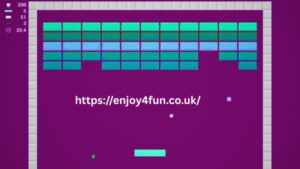Room Clicker isn’t just another idle game. It’s a time trap, a dopamine generator, and for many, a surprisingly satisfying daily ritual. At first glance, the concept is simple — click to upgrade a room. But once you’re drawn into the rhythm of tapping, optimizing, and upgrading, it becomes clear there’s more depth here than meets the eye.
Let’s take an honest look at what makes Room Clicker such a compelling game, who’s playing it, how it’s evolving in the idle game universe, and why millions of players are hooked — one room at a time.
The Premise Behind the Game
The core concept of Room Clicker is beautifully minimalistic: you start with an empty, lifeless room. By clicking (or tapping), you generate currency — usually in the form of coins or energy points. You then use that currency to upgrade parts of the room: furniture, appliances, decorations, and eventually, full renovations.
Each upgrade boosts your coin production rate, unlocking more clicks, which unlock more upgrades. It’s an exponential feedback loop — and that’s exactly why it’s so addictive.
Unlike many idle games that rely on fantasy or combat, Room Clicker appeals to a more grounded human desire: the joy of building something cozy, personal, and visually pleasing.
Real-Life Appeal of Room Customization
We live in a world where home décor is a billion-dollar industry and apps like Pinterest, IKEA Place, and The Sims dominate creative interests. Room Clicker taps into that same satisfaction. Players aren’t just upgrading for power — they’re curating an aesthetic space.
Whether you prefer minimalist interiors or colorful chaos, the game’s design engine lets you decorate your dream room virtually at zero cost. It’s like having a home renovation simulator mixed with a fidget-friendly gameplay mechanic.
Some versions of Room Clicker even let players unlock themes: retro diner, gamer cave, Zen spa, urban studio. This diversity of visuals gives the game near-universal appeal across ages and demographics.
Who Is Playing Room Clicker?
The majority of Room Clicker’s player base falls between the ages of 14 to 35, but its true sweet spot is the 18–28 age range. This is the mobile-first generation digital natives who seek quick, satisfying rewards. The game is particularly popular with high school and college students, casual gamers, and even remote workers looking for a relaxing productivity break.
Gender distribution is fairly even, with a slight lean toward female users due to the design/customization appeal. However, recent updates to the game’s layout have attracted a broader male audience as well, particularly among gamers who enjoy strategy-based progressions.
Notably, streamers and micro-influencers have also played a role in popularizing Room Clicker. On TikTok and YouTube, creators like @TinaTapz and @RetroRoomie often share satisfying “before and after” videos of their room builds, drawing in more fans.
How Monetization Works
Room Clicker is free-to-play, but like most idle games, it offers optional purchases. Players can buy coins, speed-ups, exclusive furniture sets, or even theme packs. The average in-app purchase ranges between $0.99 to $9.99, with rare “premium” events hitting the $19.99 mark.
According to mobile analytics firm Sensor Tower, similar idle games earn upwards of $50,000 per day in revenue. While Room Clicker’s exact figures are not public, insiders estimate its monthly net earnings to be between $700,000 to $1.2 million, depending on updates and seasonal events.
In-app ads are another income stream. Most are opt-in, meaning players choose to watch a 15–30 second ad in exchange for double coins or speed boosts. This balances free enjoyment with optional monetization a key reason why users rarely complain about the pay model.
What Sets It Apart From Other Clicker Games
While many clicker games follow a tired formula, Room Clicker’s standout feature is its visual transformation system. Every tap creates not just numeric progress, but also visible changes to your room. Watching a dusty, dull space morph into a dream home in real-time is incredibly satisfying.
Another edge is its soft narrative integration. Some versions include “room stories” mini backstories behind each space. For instance, you may unlock a child’s playroom that belonged to a cartoonist or renovate an abandoned artist’s studio. These small touches create emotional attachment something most idle games lack.
Additionally, the music and ambient sound design deserve mention. Subtle ASMR elements like light switches clicking, curtains fluttering, or a kettle boiling add a cozy, immersive layer that keeps players coming back.
Physical and Mental Effects of Playing Room Clicker
Casual mobile games often get dismissed as brain-numbing, but in moderation, Room Clicker can actually have therapeutic benefits. The simple act of tapping and watching progress builds a sense of control and predictability elements our overstimulated minds often crave.
Psychologists categorize games like Room Clicker under “digital self-soothing activities.” These are low-stakes, high-satisfaction tasks that help people decompress without taxing cognitive resources. For individuals with ADHD, anxiety, or burnout, games like this can serve as a sensory regulation tool.
However, like all idle games, there’s a fine line. Too much playing, especially in marathon upgrade sessions, can lead to fatigue or wrist discomfort. Experts recommend limiting gameplay to 20–30 minutes per session and taking breaks.
Player Customization and Avatars
One of Room Clicker’s most loved features is the ability to create and personalize avatars. Players can choose outfits, hairstyles, and accessories that reflect their real-life style or aspirational personas. The avatar appears in the room lounging, reading, cooking, or gaming depending on the room’s design.
This adds a unique layer of immersion. It’s no longer just a room; it’s your room, with you in it. And for many players, especially in online forums like Reddit’s r/IdleGames, sharing screenshots of their avatars in unique setups is a core part of the fun.
Behind the Scenes Who Created Room Clicker?
Room Clicker was initially developed by a small indie team known as IdleByte Studios, founded in 2019 by mobile game designer Leo Martinez (age 33, height 5’11, based in Austin, Texas). Martinez previously worked at Zynga and brought with him a strong understanding of casual player behavior.
The development team includes just 7 full-time members, making the game’s polish and popularity all the more impressive. Lead artist Rachel Ko, age 29, is behind the game’s charming interiors and avatar expressions. According to interviews, the art style was inspired by Studio Ghibli’s cozy domestic scenes and modern Scandinavian minimalism.
As of 2025, Leo Martinez’s estimated net worth from Room Clicker and related ventures is around $2.5 million, though he’s known for reinvesting most of it into new development projects. He remains active on X (formerly Twitter) under the handle @RoomLeoDev and occasionally responds to fan feedback directly.
What’s Next for Room Clicker?
The developers have teased upcoming expansions, including:
- Outdoor Upgrades: Customize balconies, patios, and gardens
- Pet Rooms: Add cats, dogs, aquariums, and mini pet stations
- Seasonal Events: Limited-time themes like Winter Lodge or Halloween Haunts
- Multiplayer Tours: Visit other players’ rooms in real-time
These features aim to expand the social and creative aspects of the game while retaining the idle core mechanics. The roadmap includes a possible desktop browser version and even an experimental AR mode, where your designed rooms can appear in your real-world space via your phone camera.
Final Thoughts
Room Clicker might seem like a simple mobile diversion, but it’s a reflection of larger trends: personalization, low-pressure entertainment, digital comfort zones. In a time when everything moves fast, games that let us pause, build, and beautify our space even virtually are more meaningful than ever.
Whether you’re a perfectionist interior designer, a stress-clicker, or someone who just loves a good idle game, Room Clicker offers something quietly delightful. And as the developers continue to build, decorate, and listen to players, the future of this tiny tap-powered world looks as polished and promising as the rooms we create inside it.






